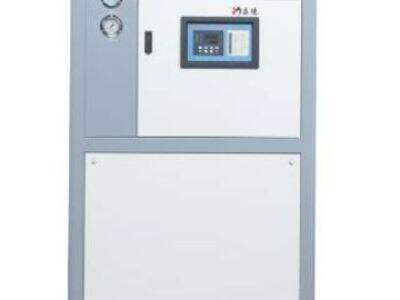The significance of defrost cycles in industrial freezers
Efficient industrial freezers are important to businesses in the food and beverage industry. What’s more and one important factor that is commonly overlooked is the defrost cycle in these freezers. Defrost operations are needed to get ice buildup under control which might affect the operation of the freezer. When defrost cycles are properly conducted, businesses can avoid problems like the decrease in cooling efficiency and rise in energy consumption as well as potential damage to the freezer's components.
The effect of defrost cycles on industrial chillers
For industrial chillers, defrost cycles are important to overall chiller energy efficiency. When your commercial freezer the ice serves as an insulator that can interfere with your freezer’s ability to cool. This in effect reduces the temperature capacity of the chiller and runs the chiller harder to maintain the desired temperature. The chiller uses more energy, thereby increasing the operational cost for companies.
Extending the life of industrial freezers with right defrost cycles
To prolong the service life of factory freezers, you have to keep vital parts clean and ensure that they can perform the right defrosting cycle, that is the purpose of evaporator. With defrosting cycles scheduling at regular intervals, which might be quite frequent for a ultra low freezer can avoid a build-up of too much ice and can be sure that it is operating as an efficient cooler.
The correlation of defrost cycle and energy use in industrial chillers
The defrost process directly influences the energy consumption of an industrial chiller. During buildup of ice on the evaporator coils, the chiller is forced to work harder to maintain the desired temperature, consuming more energy. Using right defrosting cycles will allow the businesses to make sure that chiller is functioning at high efficiency and will contribute to consuming less energy in total. This is not only good for reducing running costs, it's good for the world too as it cuts down the amount of electricity the freezer uses. By adjusting defrost cycles to match the particular cooling demands of the industrial chiller this allows companies to strike an optimal balance between energy savings and performance.
Control algorithms for defrosting for peak performance of industrial freezers
There are a few ways businesses can control defrost cycles and ensure that their industrial freezers are operating at peak performance:
Scheduled defrosting: When you have a defined schedule based on the freezer’s usage patterns, you will be able to prevent the buildup of ice and maintain the cooling efficiency you need.
Automated defrost systems: Automated defrost systems can simplify defrosting and require less manual intervention, preventing the freezer from losing as much time.
Control temperature and humidity: Monitoring the freezer temperature and humidity levels continually enables you to adjust the defrost cycles according to the exact cooling requirements at any point of the time.
Clean and service the evaporator coils: Ensuring that evaporator coils remain clean can help to prevent ice formation and poor heat transfer the efficiency of the chiller would benefit from services like these.


